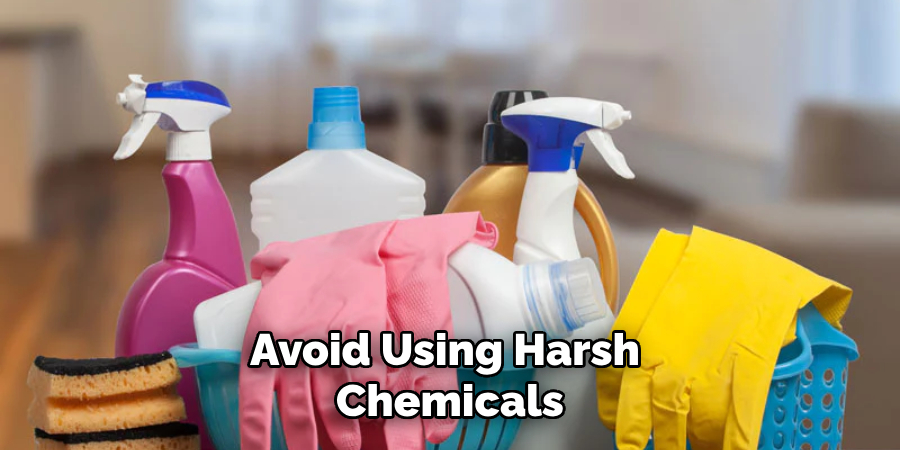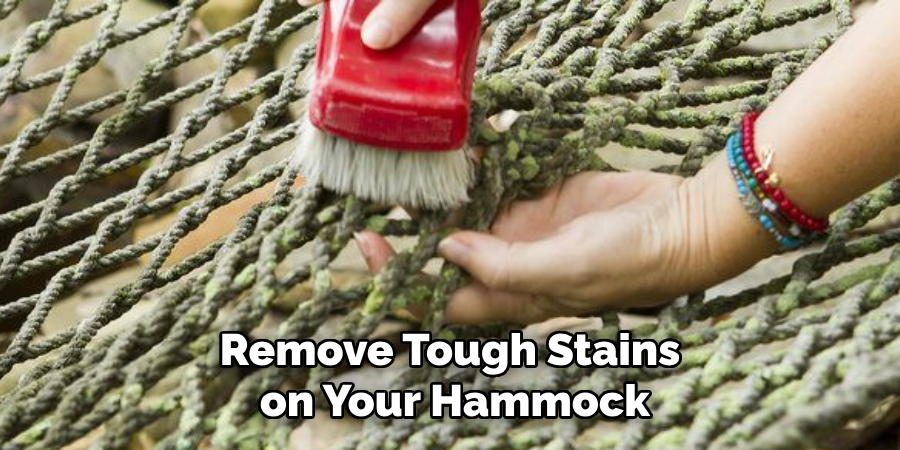Do you have a beautiful hammock that’s been sitting in your backyard, tempting you to lounge in its cocoon of comfort? During those lazy days, nothing feels better than taking an afternoon nap or reading a book suspended between two trees.

However, before you can reap the benefits of lying in your hammock all day long, it’s important to ensure it stays clean and comfortable by regularly washing it. With the right technique and dedication to maintenance care, you will be able to keep your hammock looking fresh for years! Read on to learn how to wash hammock correctly so that each time you slip into it is like coming home.
Supplies You Will Need to Wash Hammock
- Soft-bristled brush
- Running water (garden hose if possible)
- Mild detergent/soap
- A bucket or basin large enough to hold the whole hammock
- Clean towels for drying
Step-by-step Guidelines on How to Wash Hammock
Step 1: Prepare Your Hammock for Washing
Start by examining your hammock for any visible signs of damage such as tears, fraying ropes, or mildew growth. If you find any damage, repair it before washing it to prevent further harm. Next, remove any debris or leaves that may be stuck in the ropes of the hammock. Preparing your hammock before washing ensures that it gets thoroughly clean and prevents any damage to the material.
Step 2: Fill a Bucket or Basin with Water
Fill a large bucket or basin with water, enough to fully submerge your hammock. If you can access an outdoor hose, you can also simply hang your hammock between two trees and rinse it with running water. Filling a bucket or basin will give you more control over the cleaning process, especially if your hammock is large.
Step 3: Add Mild Detergent/Soap
Add a small amount of mild detergent or soap to the water. Avoid using harsh chemicals as they can damage the fabric and cause color fading. A gentle laundry detergent or dish soap works best for washing hammocks. While adding the soap, agitate the water to create suds.

Step 4: Soak the Hammock
Hold one end of the hammock and gently lower it into the bucket or basin, making sure that it is fully submerged. If you’re using a hose, slowly spray water all over the hammock until it is completely wet. Allow the hammock to soak in the soapy water for at least 15 minutes to loosen any dirt and grime. This will also help to eliminate any bacteria or mildew that may be present.
Step 5: Scrub with a Soft-bristled Brush
Remove the hammock from the water and lay it flat on a clean surface. Take a soft-bristled brush, and scrub both sides of the hammock using gentle circular motions. Pay extra attention to areas that are visibly dirty or have stains. Be careful not to scrub too hard as this can damage the fabric. Use a gentler touch if your hammock is made of delicate materials like silk or cotton.
Step 6: Rinse Thoroughly
After scrubbing, rinse the soapy water thoroughly from the hammock. You can use a hose or refill the bucket with clean water and soak the hammock again to remove any soap residue. Continue rinsing until the water runs clear, and there are no more suds. While rinsing, make sure to remove all soap residue to prevent damage and keep your hammock feeling soft.
Step 7: Air Dry Your Hammock
Gently squeeze out any excess water from the hammock. Do not wring it as this can cause damage to the fabric. Then, hang your hammock in a well-ventilated area to air dry completely. Avoid direct sunlight, which can fade the fabric. If you need to dry it indoors, use a fan or dehumidifier to speed up the drying process.
Following these steps will ensure that your hammock stays clean and in good condition for a long time. For stubborn stains, you may need to repeat the process or spot clean with a stain remover. Regularly washing your hammock will not only keep it looking brand new but also help extend its lifespan so that you can continue enjoying your outdoor oasis for years to come.
Additional Tips and Tricks to Wash Hammock
1. If your hammock is made of fabric like cotton or polyester, avoid using hot water for washing. Hot water can cause the fibers to shrink and damage the fabric.
2. To remove tough stains on your hammock, create a paste using equal parts baking soda and water. Apply the paste onto the stain and let it sit for about 30 minutes before scrubbing with a brush and rinsing with cold water.

3. For mildew or mold stains, mix equal parts white vinegar and water in a spray bottle. Spray the affected area and scrub with a brush before rinsing with cold water.
4. If your hammock has wooden spreader bars, it is important to remove them before washing. This will prevent any damage to the bars and make washing easier.
5. For hammocks with metal parts, it is best to hand wash them separately with mild soap and water. Avoid using harsh chemicals or abrasive cleaners as they can damage the metal.
6. Always air-dry your hammock in a well-ventilated area to prevent mildew growth. Never put it in the dryer as this can cause shrinkage and damage to the fabric.
7. To maintain the color and softness of your hammock, add a cup of white vinegar during the rinse cycle. This will also help remove any residue from detergent.
8. If you have a hammock with a spreader bar, make sure to hang it loosely while drying to avoid warping or bending the bars.
9. It is important to regularly check for any tears or weak spots in your hammock and repair them before washing. This will prevent further damage during the washing process.
10. Avoid using bleach on colored hammocks as it can cause fading and weaken the fabric over time. Stick to a mild detergent for washing.
Following these tips and tricks will not only help you keep your hammock clean and in good condition but also extend its lifespan. Remember to always follow the manufacturer’s instructions for washing and care, and enjoy a comfortable and well-maintained hammock for years to come!

Precautions Need to Follow for Washing Hammock
1. The first precaution you should take before washing your hammock is to check its label. It may sound like a simple step, but it is important to know if your hammock can be washed in a machine or not. Most hammocks are safe for machine washing, but some may require hand-washing or dry cleaning.
2. Another precaution to keep in mind is the weight limit of your washing machine. If your hammock is too heavy, it may damage your machine or cause it to malfunction. It is always better to check the weight limit and make sure your hammock meets the requirements before starting the wash.
3. Before putting your hammock in the washing machine, it is important to remove any metal parts or accessories attached to it. This includes hooks, carabiners, and spreader bars. These metal parts can cause damage to the machine and also potentially harm your hammock.
4. If you are hand-washing your hammock, make sure to use a mild detergent and lukewarm water. Avoid using harsh chemicals or bleach as they can weaken the fabric and cause discoloration. Gently scrub any stubborn stains with a soft brush or cloth.
5. Always wash your hammock separately from other laundry items to avoid tangling or damaging the fabric. This is especially important if your hammock has metal parts attached, as they can snag onto other clothing items.

6. After washing, make sure to thoroughly rinse the hammock to remove any soap residue. Soap left behind can cause the fabric to feel stiff and uncomfortable.
7. When drying your hammock, avoid using high heat as it can shrink or damage the fabric. It is best to air-dry your hammock in a well-ventilated area. Make sure to reshape the hammock as it dries to prevent wrinkles and maintain its original shape.
Following these precautions will ensure that your hammock stays clean and in good condition for many more relaxing days ahead. Remember also to check the care instructions provided by the manufacturer for specific guidelines on how to wash your particular hammock. With proper care, your hammock can last for years of outdoor enjoyment. Happy washing!
Conclusion
With a few simple steps, you can quickly and easily have your hammock clean again in no time. Taking the extra time to wash your hammock properly will help ensure that you keep it looking like new for years to come. So, the next time you take your hammock out of storage, don’t forget to give it a proper cleaning before use.
If you follow our guide on how to wash hammock above, then you should have no problem restoring your beloved outdoor accessory within minutes. Now that we have discussed how to wash a hammock, why not give it a try today? It’s so easy and quick; you’ll be glad you did!
